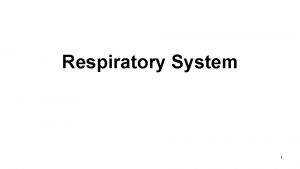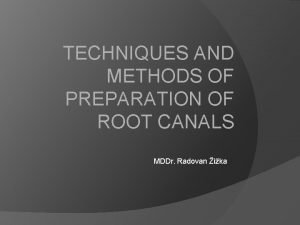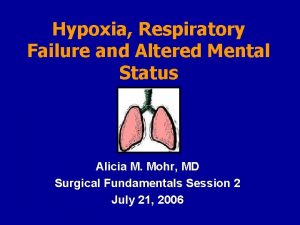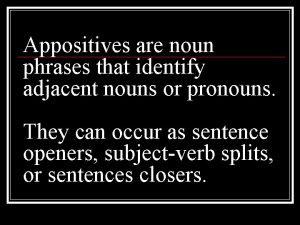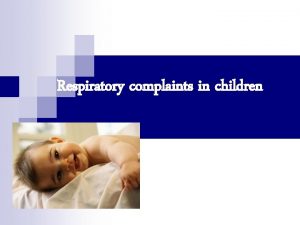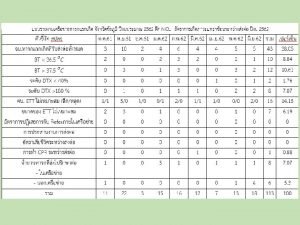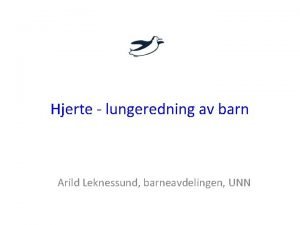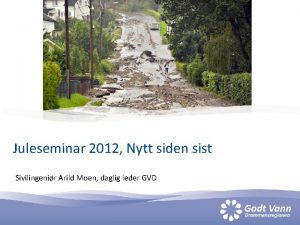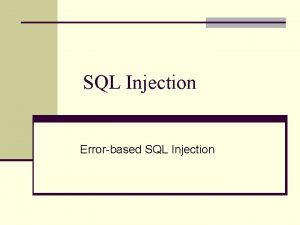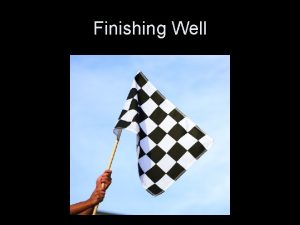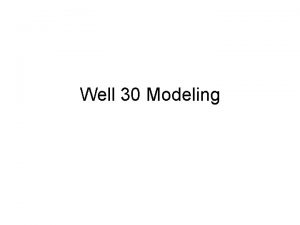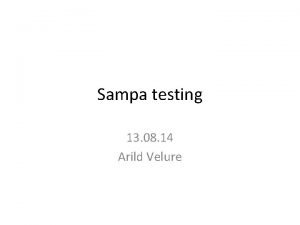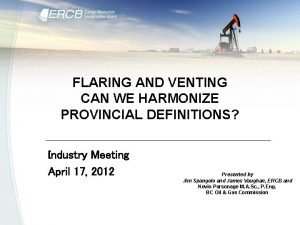No flaring well testing Injection Falloff testing Arild

















- Slides: 17

No flaring well testing (Injection Fall-off testing) Arild Fosså | Expro Norway AS 2015 - SPE Workshop in Arctic Norway March 11 th – 12 th 2015 | Harstad, Norway

Traditional well testing • Low actual emissions, but aesthetically un-appealing • Important data for development decisions • Are there real alternatives ? ? 2015 - SPE Workshop in Arctic Norway March 11 th – 12 th 2015 | Harstad, Norway

Background Dynamic Well Test data is used as input data for the following; • Reservoir Model • Well performance Model, and • Pipeline and Facilities Models Key data provided are; • Pressures, • Temperatures • Flow rates • Fluid data (both PVT and large volume) 2015 - SPE Workshop in Arctic Norway March 11 th – 12 th 2015 | Harstad, Norway Well Bore Pressure transient from a Well Test

Example of conseq. from missing data K Field knowledge Reservoir evaluation Development strategy Miss understand : Poor estimate : • heterogeneity org. • K anisotropy • Reserves • Production profiles Wrong decisions for recovery mechanism (gas/water injection, gas cycling/depletion) Business Less Profits / Lose money Overestimate : Underestimate heterogeneity size Miss or not quantify extra permeability (fract. , dissolution) • sweeping efficiency • reserves • Underestimate Production profiles • Poor estimate segregation effects 2015 - SPE Workshop in Arctic Norway March 11 th – 12 th 2015 | Harstad, Norway Overestimate Facilities Underestimate : • Facilities • Profitability Lose money • Less Profits • Project abandonment

Backdrop on the Barents Sea • The big picture for the Barents Sea area is characterized as follows; – Same formal rules & reg’s as the rest of the NCS. – High focus from environmental groups – High focus on spill prevention from the authorities – High Political focus – (spills, blow-out risk, ice-edge, public opinion, etc. ) • Due to this an alternative way of testing wells could be of interest. 2015 - SPE Workshop in Arctic Norway March 11 th – 12 th 2015 | Harstad, Norway

What is needed for a Well Test? • • Porosity Viscosity Flow rates Pressures From cores From Fluid Samples From Surface (normally) From Bottom Hole • In addition it is important to minimize the accumulator effect downhole inside the string – Well Bore Storage effects. The “simple” option…. . Gas test - Westhope, North Dakota, January 07 • Due to this there is great freedom in how you achieve the above. The elaborate option……. 2015 - SPE Workshop in Arctic Norway March 11 th – 12 th 2015 | Harstad, Norway Bideford Dolphin plant - 2010

Injection Fall-off testing • One of the parameters we have freedom over is the flow rate. Which is used to induce the pressure transient. • There is nothing stopping us from doing an injection period rather than a flow period to get the pressure transient going. • The equivalent to the normal pressure build -up would be a pressure Fall-off. • Gives the same type of data as a normal well test. – Except Fluid Data - obtained during open hole logging. 2015 - SPE Workshop in Arctic Norway March 11 th – 12 th 2015 | Harstad, Norway Classic Injection Fall-off test.

Injection Fall-off application • Traditionally Injection Fall-off tests have been used for; – Water zones and water-flood projects. • Measure pressure increases to accurately predict pressure rises from long-term fluid injection. – Verify that reservoir zones are «non-migration» types – i. e. no communication between reservoir zones. – Changes in permeability and skin over time. – Geothermal wells – Water disposal wells – Traditionally used for Gas Storage wells • There isn’t anything stopping a wider use. 2015 - SPE Workshop in Arctic Norway March 11 th – 12 th 2015 | Harstad, Norway

Injection Fall-off issues • Issues associated with Injection Fall-off testing vs. normal Well Tests – First, the character of the system changes. • Instead of single-phase flow, we are now faced with two-phase water/oil flow governed by relative permeability's – Second, injection of cold water induces temperature changes in the formation • This complicates the pressure behaviour through temperature effects on the oil and water viscosities. – Third, injection of water may result in the formation accidentally fracturing and in coupling of rock mechanics and fluid flow problems. • It is critically important for successful test interpretation to avoid accidental fracturing and to inject water at below the formation fracturing pressure. 2015 - SPE Workshop in Arctic Norway March 11 th – 12 th 2015 | Harstad, Norway

Mitigation #1 System character change • Issue - Introduction of two-phase fluids in the reservoir affecting the relative permeability's • Mitigation – Use theoretical «twobank» and «multi-bank» models. – handles the two-phase aspect of an Injection Fall-off test. – addresses changing saturation gradients, which has a significant impact on the pressure transients. 2015 - SPE Workshop in Arctic Norway March 11 th – 12 th 2015 | Harstad, Norway Horner plot example illustrating the effectsaturation of bankingprofile on an side view Schematic analytical plot Schematic saturation profile top view

Mitigation #2 Reservoir cooling • Issue - cold water reduces formation temperature, hence oil & water viscosities • Mitigation – Research show that for pressure transients governed by a moving thermal front, one should use fluidproperties corresponding to the cold injection fluid to analyse the results correctly. – Prior PVT data a plus for job planning – Extensive Fluid Sampling program for Wireline Formation Tests – Bulk sample issue for facilities & pipeline models not solved fully. (Limitation with method) 2015 - SPE Workshop in Arctic Norway March 11 th – 12 th 2015 | Harstad, Norway Pressure transient data for injection of 95°C water into a 250°C reservoir

Mitigation #3 Formation fracturing • Issue – Risk of accidental formation fracturing, possibly fracturing the cap rock. • Mitigation – Good control of the Fracture Gradient, plus injectivity modelling before a job. – Requires general good area knowledge. – Possibly that Injection-Fall. Example simulation of BHP for Injection Fall-off job off method is best suited for appraisal wells. Generic Pore-pressure & Frac gradient curve 2015 - SPE Workshop in Arctic Norway March 11 th – 12 th 2015 | Harstad, Norway

Mitigation #3. 1 Formation fracturing - vacuum • Other issue – In case a water-injection well is fractured, the wells often go on surface vacuum, where the fluid level can fall below surface, making surface pressure data monitoring impossible. • Mitigation – Normally the vacuum would stem from fracture propagation, which limits the issue. However, dealing with this complication requires bottom hole pressure recorders (memory or Surface Read-Out). 2015 - SPE Workshop in Arctic Norway March 11 th – 12 th 2015 | Harstad, Norway

Injection Fall-off application • It is not recommended to do Injection Fall-off tests for rank exploration wells. • However, we would recommend it as a possible Appraisal Well technique, provided the following; – Prior fluid data obtained from earlier exploration wells – Fluid properties available for reduced reservoir temperatures – Sufficient fluid sampling planned on actual well during OH logging – Porosity from earlier cores available – Core saturation experimental results available from earlier wells – Fracture gradient is well known for the target formation 2015 - SPE Workshop in Arctic Norway March 11 th – 12 th 2015 | Harstad, Norway

Other • To plan a successful Injection Fall-off test the following is needed; – More simulations than normal to model pressure transient responses to ensure correct job design. – A plan for bulk samples for pipeline and facility model experiments • Can you live without? • Can it be obtained from the Initial Flow period to surface tanks? – Bottom Hole gauges must be used for data gathering. • Equipment and services required are the same as for a normal DST, with the exception of Fluid Sampling. 2015 - SPE Workshop in Arctic Norway March 11 th – 12 th 2015 | Harstad, Norway

Has it been done before? • Source: NPD + Press release – http: //factpages. npd. no/factpages/Default. aspx? culture=no • • Well bore: Rig: Time frame: Formation: 7122/7 -4 S Klappmys Polar Pioneer November 2006 Kobbe (1911 -1927 m) 2015 - SPE Workshop in Arctic Norway March 11 th – 12 th 2015 | Harstad, Norway

Thank you! Arild Fosså | Expro Norway AS arild. fossa@exprogroup. com 2015 - SPE Workshop in Arctic Norway March 11 th – 12 th 2015 | Harstad, Norway
 Vray light falloff
Vray light falloff Iso classification of endodontic instruments
Iso classification of endodontic instruments Mc respiration
Mc respiration Coronal flaring in endodontics
Coronal flaring in endodontics Respiratory distress nasal flaring
Respiratory distress nasal flaring The sound of the approaching grain teams
The sound of the approaching grain teams Tachypnea causes
Tachypnea causes Nasal flaring
Nasal flaring Rommen skole
Rommen skole Arild haraldsen
Arild haraldsen Universialism
Universialism Arild leknessund
Arild leknessund Arild wanderås
Arild wanderås Mads arild eidem
Mads arild eidem Plan prodaje
Plan prodaje Bjørn arild petersen
Bjørn arild petersen Arild moen
Arild moen Arild aspelund
Arild aspelund


